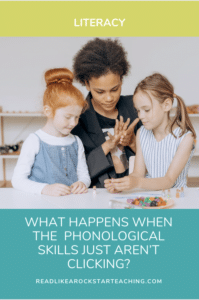

I don’t know about you, but during the second half of any school year, I really begin to think about where my students are and where they need to be by the end of the year. I take a look at what will be expected of them the following year, factor in the dreaded “summer slide”, and kick instruction into high gear to make sure everyone is growing.
Stanovich & Siegel, and Shankweiler tell us, “At any age, poor readers as a group exhibit weaknesses in phonological processing and word recognition speed and accuracy, as do younger poor readers”.
Through read aloud with my K-2 students, I am aware of their listening comprehension skills. When they are unable to answer similar comprehension questions after reading material on their own, it’s clear to me that their decoding skills and phonological processing must be to blame.
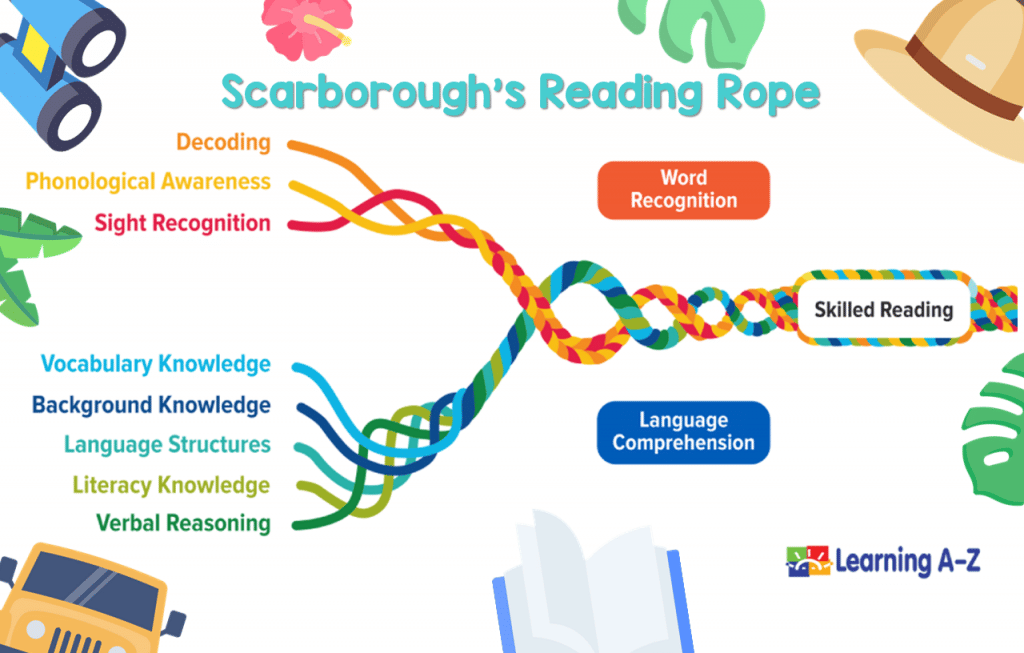
There are so many important skills that go into reading. Decoding and phonological awareness seem to be the ones that get ignored for some reason. They may seem like silly little unrelated activities, but they are critical to teach.
I want to share 4 tips that I swear by to help those struggling readers strengthen their decoding skills.
As much as possible, when you are working on hearing sounds in words, have your students write them down. I always had my students have a dry erase board and marker out during phonemic awareness time. (Add in motions, too. Tap on your fingers or use counters to represent sounds.) This will help struggling readers make the connections between decoding and encoding.
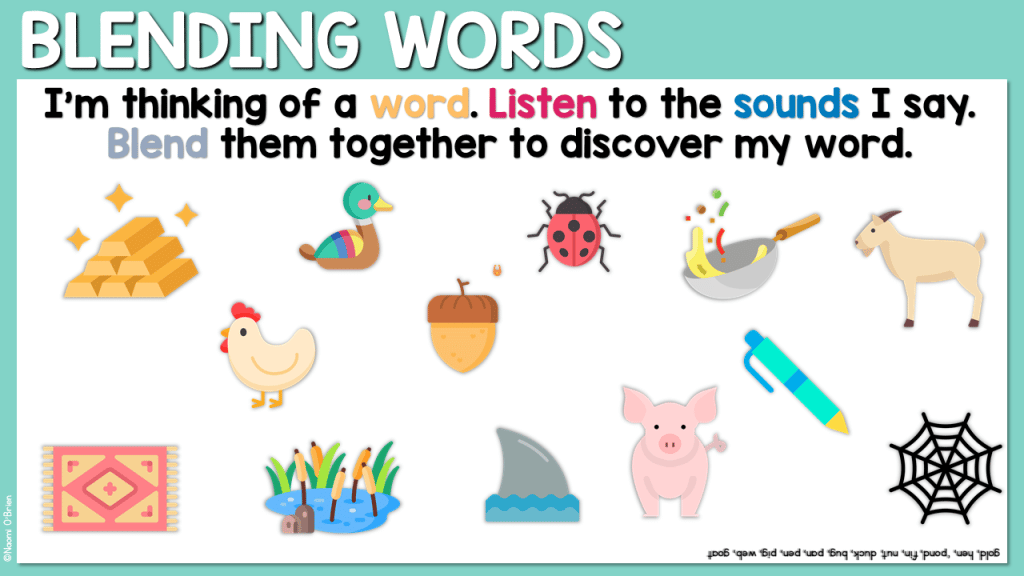
If you are working on blending words it might go something like this:
You: Listen to the sounds I say: /m/ /u/ /d/. What word did I say if you blend those sounds together?
Students: Mud!
You: Yes! Now let’s write down the sounds we heard. /mmmmm/ What letter makes that sound? Write it down. /uhhhhhh/ Write down the letter that makes that sound. /d/. Write down the letter that makes that sound. What word did you write?
Students: Mud!
You: How do you know? Sound it out and read it to yourself to check.
Students: /m/ /u/ /d/ mud!
*Benefit: Strengthens their phonemic awareness and spelling (encoding) skills. I talk more about this here.

Practice these skills DAILY, not once in a while or after you notice students are struggling to decode. Also, notice where blending, segmenting, and manipulating sounds are in the picture above. They are very complex to new readers and even older readers who are struggling. Give them grace and patience. And give yourself grace too. It’s hard to teach and it’s hard to learn. They need consistent practice. They also need these skills to be reviewed repeatedly. Just because they have learned syllables, doesn’t mean you move on and never mention them again! When you are saying sounds and they are shouting out nonsense, don’t give up. Blend the sounds closer together, add pictures for support, use manipulatives, just don’t give up.
A break down of all of these skills can be found here. When you have students struggling to read, they don’t need a new intervention thrown at them every few weeks. They need researched based solutions that will work over time and phonological awareness is tried and true!
fMRI’s have shown us how our brains work when we are learning to read and when we are reading. Reading doesn’t come naturally to us like talking and walking do for many of us. It is a skill that must be introduced, practiced, and mastered. 20 hours a school year is all that’s needed. That’s only a few minutes a day.
I practice these skills whole group. I follow an I do, We do, You do model over the course of the year. In the beginning, a lot of it is me asking and answering my own questions. Hearing sounds can be really hard! Keep it at. They need the exposure and practice hearing the individual sounds in a word. Pronounce them loud and clear and give a good amount of wait time for students to process what they heard.

This might sound scary, but all it means is have a scope and sequence. Teach letters, sounds, and skills in a certain way… on purpose… with a plan. 🙂
When you are teaching kids to read, you all will quickly notice the 26 letters and sounds you taught them will only get them so far for so long. They need long vowels, blends, digraphs, and diphthongs and phonics rules if they are going to continue on. What’s your plan for that? What will you teach and when will you teach it?
Here’s the scope and sequence that’s worked for me. (Depending on the guided reading books you have readily available for your students, you may find that a different path is needed for your students.) I let them know that sometimes we will run into sounds we haven’t learned yet, but that we will learn them eventually.
Tentative Scope and Sequence:
Short Vowels (a, e, i, o, u)
Blends at the beginning and end of words. I build this into onset and rime practice. Also, focus on 2 letter and 2 letter blends like st but also str. Point out how finding and grouping blends can make blending words easier.
Digraphs (th, ch, wh, sh)
Glued Sounds (ang, ing, ong, ung, ank, ink, onk, unk)
The Floss Rule
Silent E & Vowel Teams & Diphthongs
Controlled-R (ar, er, or, ir, ur, Bossy R)
Glued Sounds (ang, ing, ong, ung, ank, ink, onk, unk)
And so on….
(Prefixes and suffixes get covered during foundational skills time.)
I do all of this by introducing a sound of the week. I create spelling lists based on our sounds of the week and add the sound and spelling(s) to our Sound Anchor Chart. This starts out as blank paper and gets added to weekly.)
If our sound of the week was /ar/, I would draw a star and the write ‘ar’ under it. I would make sure the students understood how to use the anchor chart to recall sounds and spellings by modeling how to use it myself throughout the day.
It sounds like a lot, but I really just respond to the students in front of me and their needs as they come up.
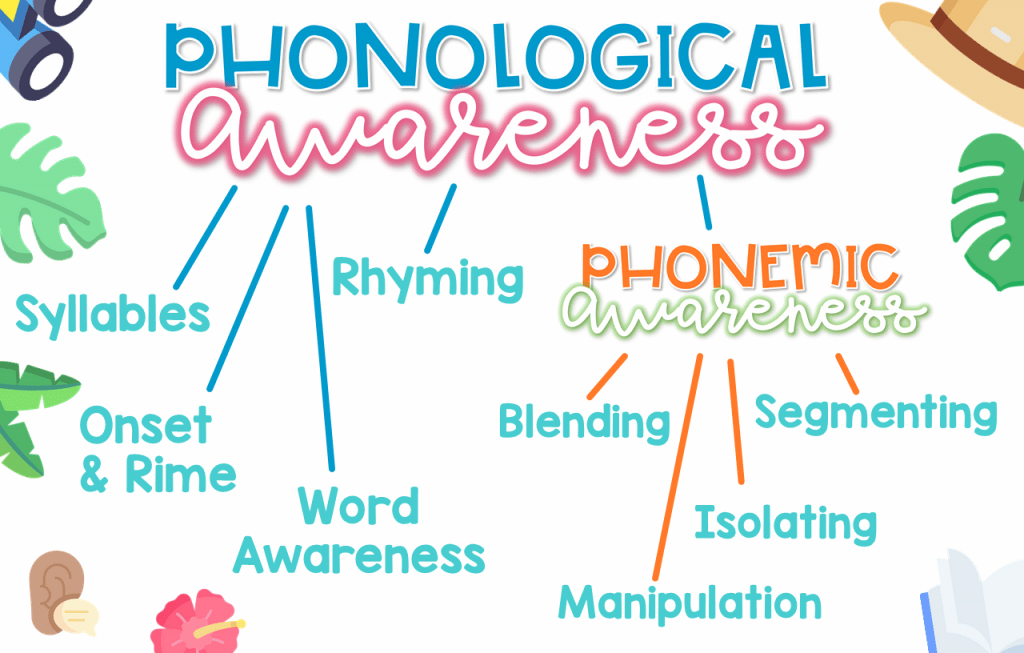
Working on all of these skills in isolation won’t magically turn your students into strong readers without you helping them make the connection to reading.
Let me set the scene:
For months you have been working on phonological awareness strengthening activities with your students. Yay!
Then during small group, you’ve been leading guided reading groups, but students are still struggling. You are feeling frustrated. They can blend and segment and add sounds whole group at the carpet, but when it’s time for them to decode on their own, they clam up. What’s going on?
Try making the connection to the skills they’ve learned and how they translate to reading (and spelling for that matter).
If they are are trying to read the word ‘lump’, you might remind them to say all of the sounds and then blend them together. “You know how to blend sounds, remember? Say each sound quickly, then say the word you made.”
You might also remind them to switch the beginning sound. “This looks like the word jump. I know you know that word. How can rhyming help you figure this word out?”
I also make connections across disciplines. When I am modeling writing, and I need to spell a word, I will use the anchor chart we created to find the proper sound spelling or I will segment a word and write down the corresponding sounds to show them how I am using skills they have to strengthen my writing.
Continue to do this until they automatically do it on their own. Remember, reading is not natural. They are training their brains to do something it hasn’t evolved to do!
Give students independent practice. Yes, your students absolutely need to hear YOU making sounds and they need to practice making sense of them, but they also need to be able to do the same thing when the sounds are coming from them. Sometimes, they pronounce sounds incorrectly, or say them too slowly to make sense of them. It’s a skill they have to continue to work on.
After playing games at my teaching center a few times, I put them out into student centers so they can practice with each other or independently.
They can work on skills in isolation or you can combine many for review and practice.
This fun game I created comes with 270 game cards to practices these important skills.
I also have a bundle with a coupon code down below that will help you really strengthen your students reading skills!
You’ve got this!

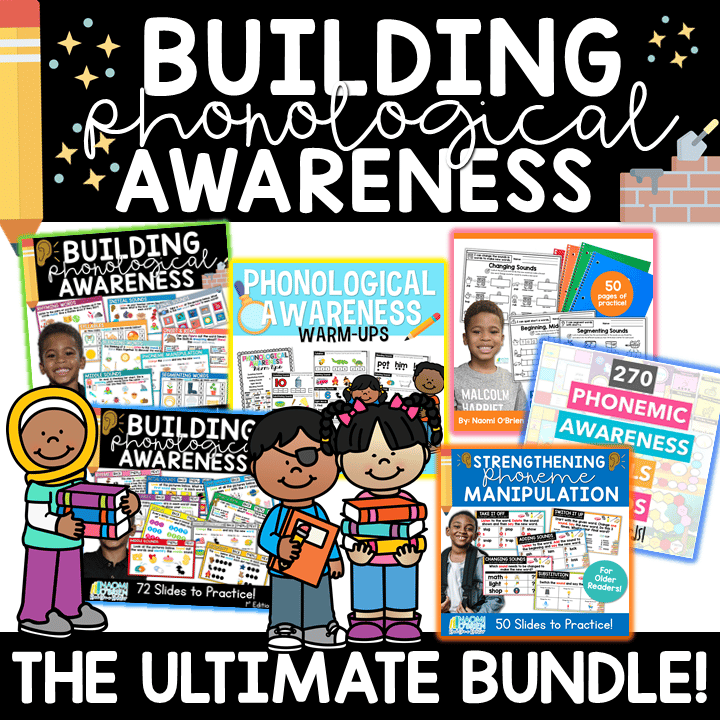
Join this reading membership! It’s perfect for educations, parents, or caregivers, that just want pre-made lessons that are aligned to the science of reading and really easy to teach to get quick reading results!
Use the code: PA6 at checkout to save $6.00 every month!
Check out The Systematic Phonics and Phonological Awareness Reading Program.
It includes daily slides to teach and printables for practice!
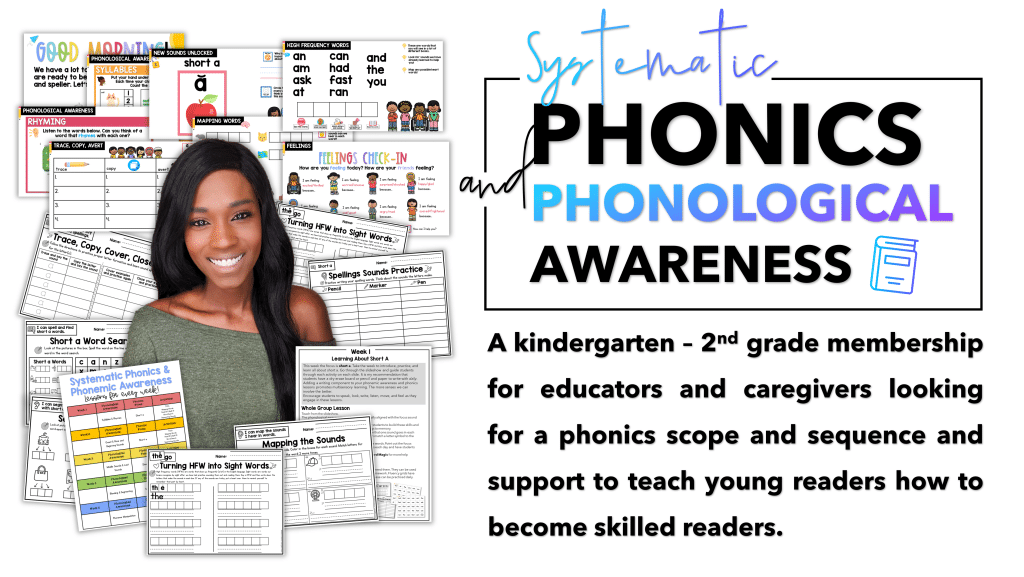


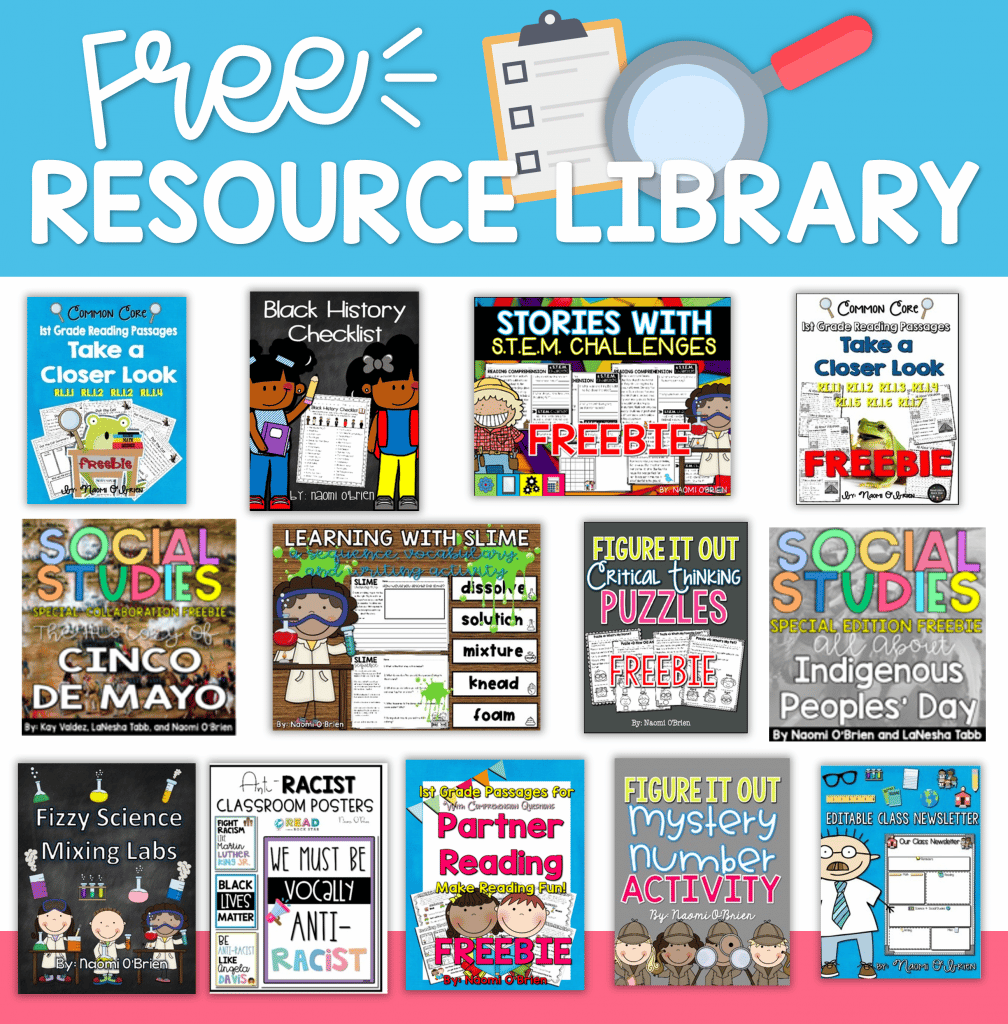
| Cookie | Duration | Description |
|---|---|---|
| cookielawinfo-checkbox-analytics | 11 months | This cookie is set by GDPR Cookie Consent plugin. The cookie is used to store the user consent for the cookies in the category "Analytics". |
| cookielawinfo-checkbox-functional | 11 months | The cookie is set by GDPR cookie consent to record the user consent for the cookies in the category "Functional". |
| cookielawinfo-checkbox-necessary | 11 months | This cookie is set by GDPR Cookie Consent plugin. The cookies is used to store the user consent for the cookies in the category "Necessary". |
| cookielawinfo-checkbox-others | 11 months | This cookie is set by GDPR Cookie Consent plugin. The cookie is used to store the user consent for the cookies in the category "Other. |
| cookielawinfo-checkbox-performance | 11 months | This cookie is set by GDPR Cookie Consent plugin. The cookie is used to store the user consent for the cookies in the category "Performance". |
| viewed_cookie_policy | 11 months | The cookie is set by the GDPR Cookie Consent plugin and is used to store whether or not user has consented to the use of cookies. It does not store any personal data. |
Thank you for your interest in booking a private professional development experience! Please fill out our Booking Inquiry form and a member of our team will contact you soon.